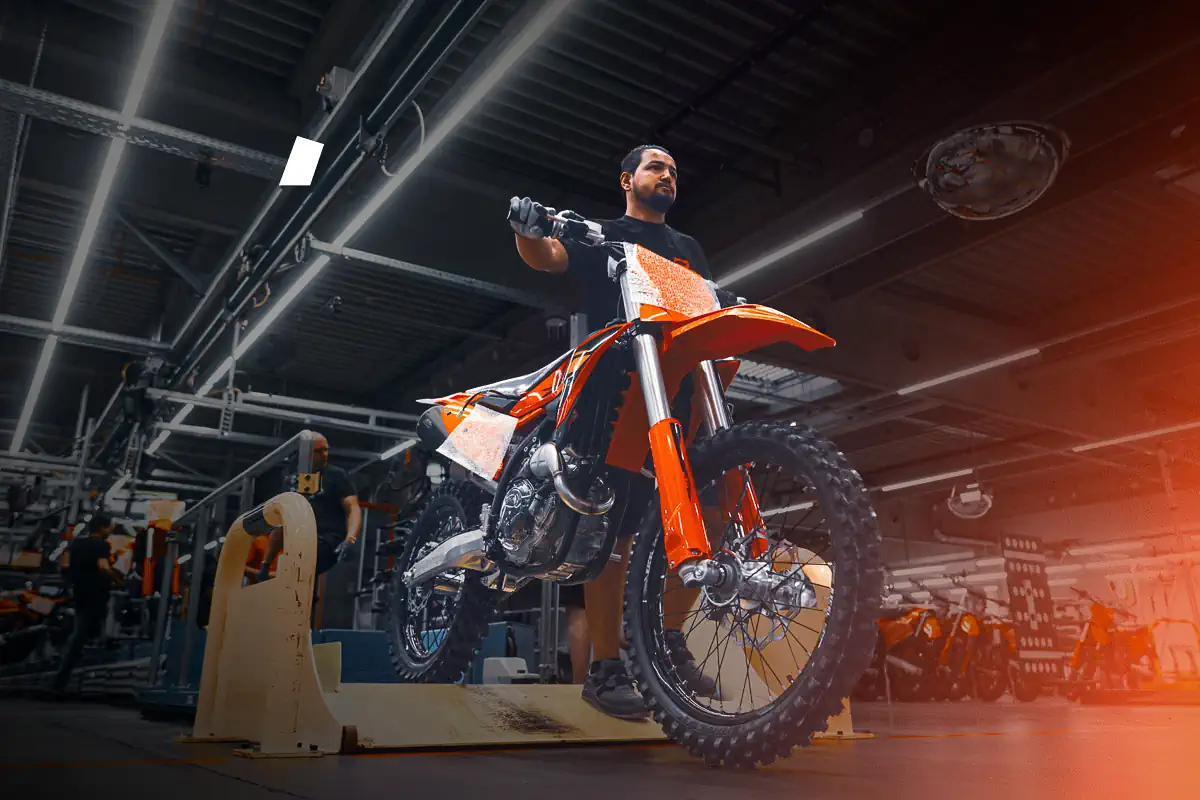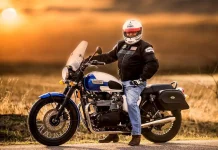If you read my Editor’s Letter every month, well, you’re a masochist. Beyond that, you might have noticed that I never weighed in on KTM’s financial issues. There’s a good reason for that. While I have a decent understanding of motorcycle riding, I can’t quite wrap my head around the black art of international business finance. I even tried to persuade Associate Editor Freeman Wood to give it a try, as his investment background suggested to me that he might have a shot at it. He declined—wisely, no doubt. I’m sure you read a lot of noise from people with limited knowledge of the subject; we didn’t want to add to it.
This morning, I was greeted with a welcome press release. KTM has restarted its Mattighofen production operations. Apparently, they’ll be starting with the dirt bikes and some LC4-engined bikes, including the 690 Enduro R and 690 SMC R, and their Husqvarna equivalents.
KTM AG CEO Gottfried Neumeister said, “Restarting production gives us the stability we need to fully refocus on quality, customer proximity, and further development.”
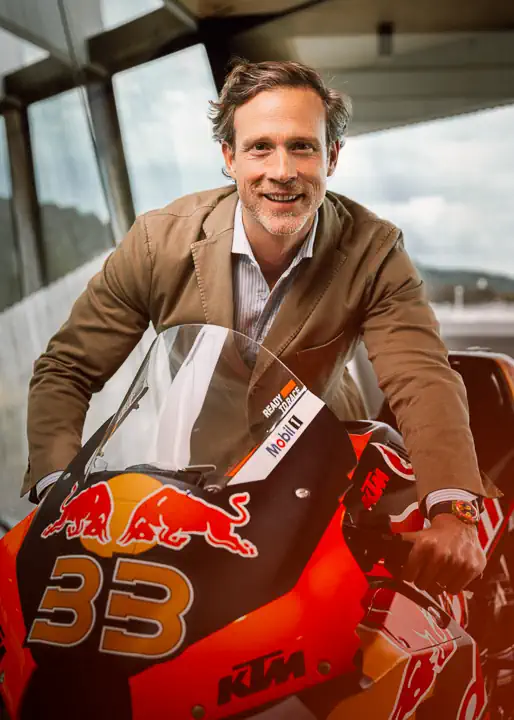
For a while, I’ve had my concerns about how KTM markets its motorcycles. However, when things seemed to be going great, I kept it to myself. Obviously, the people in charge were doing something right and didn’t need my advice. Well, now that KTM looks to be in a rebuilding mode, I’ll throw my two cents’ worth in, free of charge.
Let’s start with ending the marketing of near-duplicate bikes under different brand names. BSA and Triumph’s shared models blurred their identities, contributing to their collapse. Suzuki and Kawasaki’s shared badging from 2001 to ’05 confused buyers and weakened brand loyalty. I can’t think of a single motorcycle fan who likes this sort of thing, and it undercuts both brand identities.
KTM got started in the dirt bike world by making enduro bikes in the 1950s. Egon Dornauer snagged a gold medal in the 1959 International Six Days Trial (now the International Six Days Enduro). Continuing the enduro theme, KTM built Pentons for consumption in the United States when there were no KTMs imported. Eventually, though, KTM found US importers, and identical KTMs and Pentons were being sold as early as 1971. By 1978, KTM was in a strong enough position that it stopped making Pentons, and the storied US marque disappeared. With this strong enduro heritage, KTMs should be the enduro bikes. KTM started the street and adventure lines on its own, so they should also be KTM-branded.
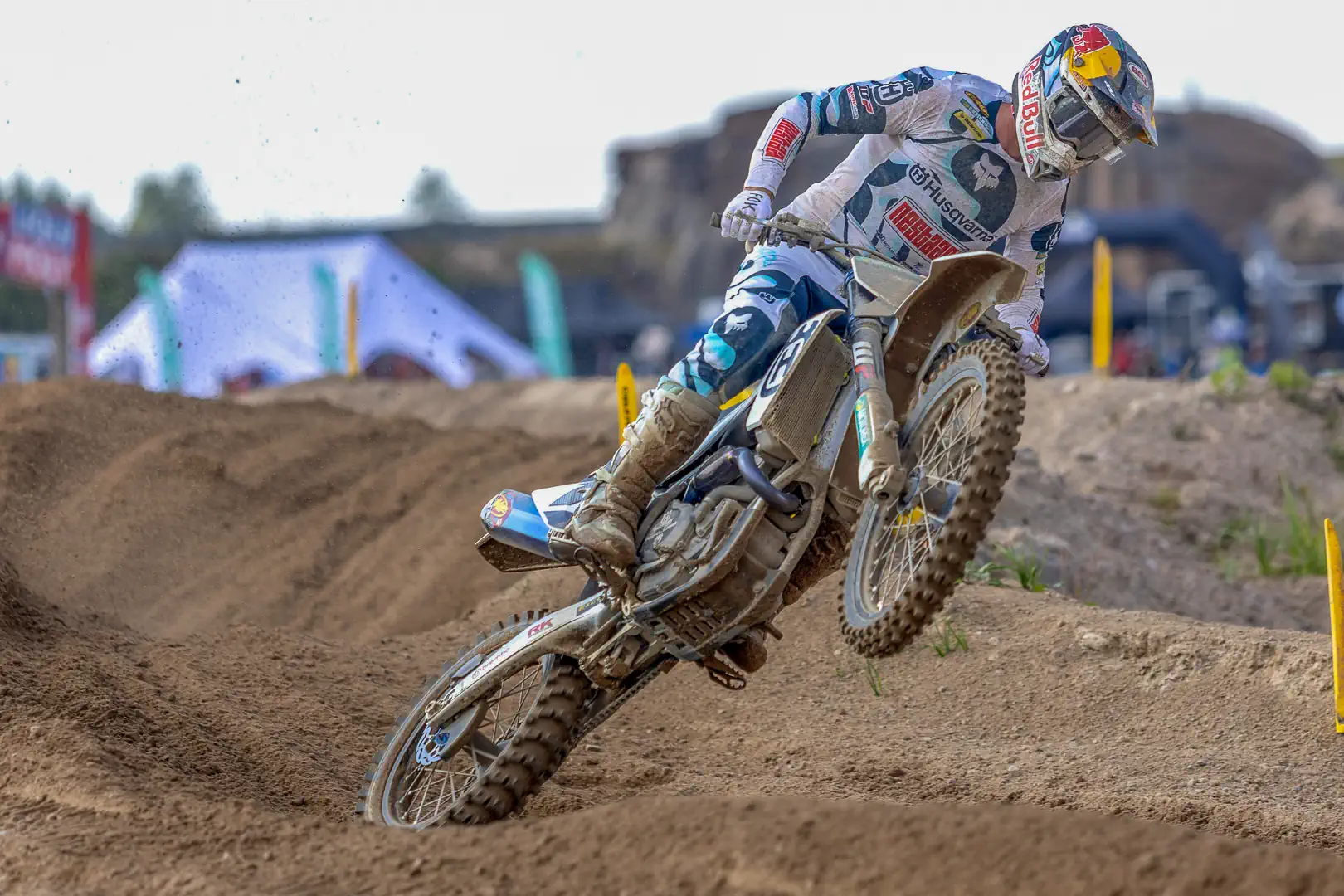
Husqvarna has a long history of success in what’s now called MXGP. The first world championship came in 1960 with Bill Nilsson on a 500cc Husqvarna four-stroke. KTM didn’t win a world MX title until 1974 when Gennady Moiseyev did it on a 250cc two-stroke. KTM’s first championship-winning four-stroke didn’t appear until Tony Cairoli grabbed the MX1 crown on a 350 SX-F. In total, Husqvarna had 15 motocross world championships, plus a Supercross title with Jason Anderson aboard. That’s enough MX history to justify Husqvarna as the motocross brand.
The MX and enduro bikes could also be sliced up by two-strokes and four-strokes. Husqvarna has the four-stroke heritage, and KTM started with two-strokes. If KTM wants to establish itself as the premier MX brand, it could focus on KTMs as four-strokes and Husqvarnas as two-strokes, given that both have earned titles in both engine configurations. Heck, go ahead and apply that across the off-road board—one brand exclusively two-strokes and the other four-strokes. That would make the brands much easier to understand and give them a strong differentiator.

GasGas was supposed to be the fun brand, but the bikes produced never backed that up—they were all too close to the KTMs and Husqvarnas. Instead, have Bajaj, which now makes KTMs street-legal 390s and 200s, develop family-oriented trail bikes in the mold of the Honda CRF-F, Kawasaki KLX-R, Suzuki DR-Z, and Yamaha TT-R off-road motorcycles. The bikes should have electric start and EFI, because that makes them more fun. GasGas could up the ante with affordable 350cc or larger trail bikes—a market completely abandoned by the Japanese. GasGas’s trials bikes compete in an overcrowded niche with limited demand, diluting focus from a broader trail bike market.
I’ll also bring up one of my pet peeves—KTM’s lineup designations. KTM has 10 different lines of motorcycles, creating confusion where clarity is needed.
KTM has a nice range of bikes with Adventure in the name. However, there is no Adventure lineup. Instead, the bikes called Adventure are listed under Travel. There are two very travel-oriented motorcycles—the 1290 Super Duke GT and 890 SMT—yet they’re not under Travel. They get their own Sports Tourer designation. It doesn’t need to be this complicated.
Enduro is a word that KTM throws around wildly and widely. There are two models with the Enduro name—the 690 Enduro R and 390 Enduro R. Neither of them is in the Enduro lineup. The 690 is considered a Travel bike, while the 390 is the lone bike designated as Dual Sport.
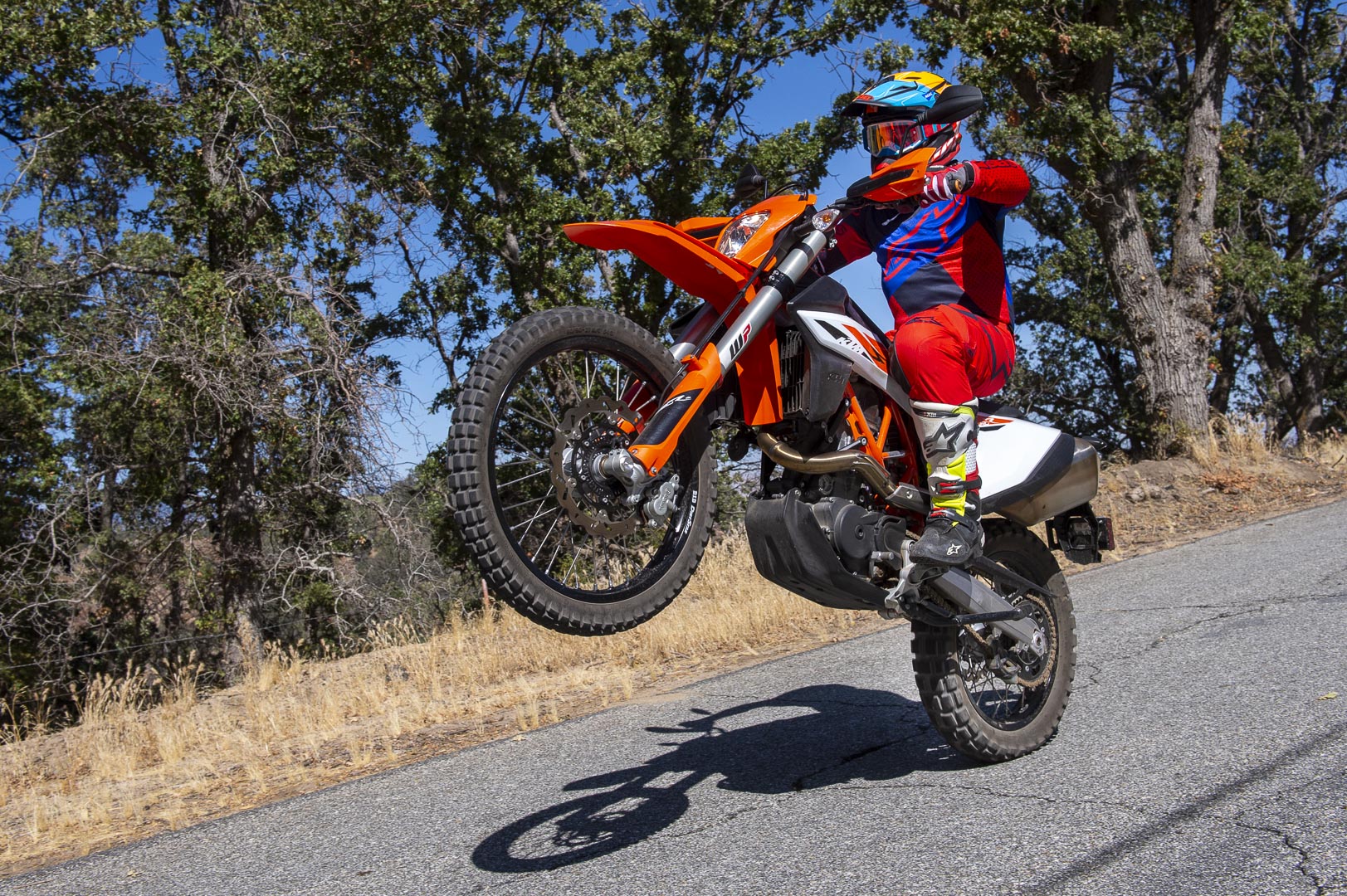
That may come as a surprise to you, as KTM also makes the 500 EXC-F and 350 EXC-F, which absolutely fit the description of Dual Sport. Yet, those two street-legal, four-stroke dirt bikes are lumped in with the XC-W off-road-only bikes and the oddly named 450 XCF-W. Then, you have Cross Country versions of these bikes with the XC-F and XC designations, as they have a close-ratio transmission. XC makes sense for Cross Country, but they also use it for EXC and XC-W Enduro bikes.
KTM also has problems with the SM prefix. You have the 450 SMR, and there are the 390 and 690 SMC R—all three under the Supermoto umbrella. The 890 SMT is the odd SM out, designated a Sports Tourer.
Naked Bikes are Dukes, except for the 1390 Super Duke GT, which is a Sports Tourer.
On the upside, all the Motocross bikes get the SX designation. The Electric bikes are all electric and have E in their model names. RC is reserved for Supersport bikes—the RC 8C and RC 390. So, KTM can get it right.
If all of this seems confusing to you, there’s a reason—it’s confusing.
Part of the KTM comeback should be a simplification and standardization of its model names and numbers, while also bringing consistency to its categories.
Can someone please slip this into the inbox of Mr. Neumeister?



